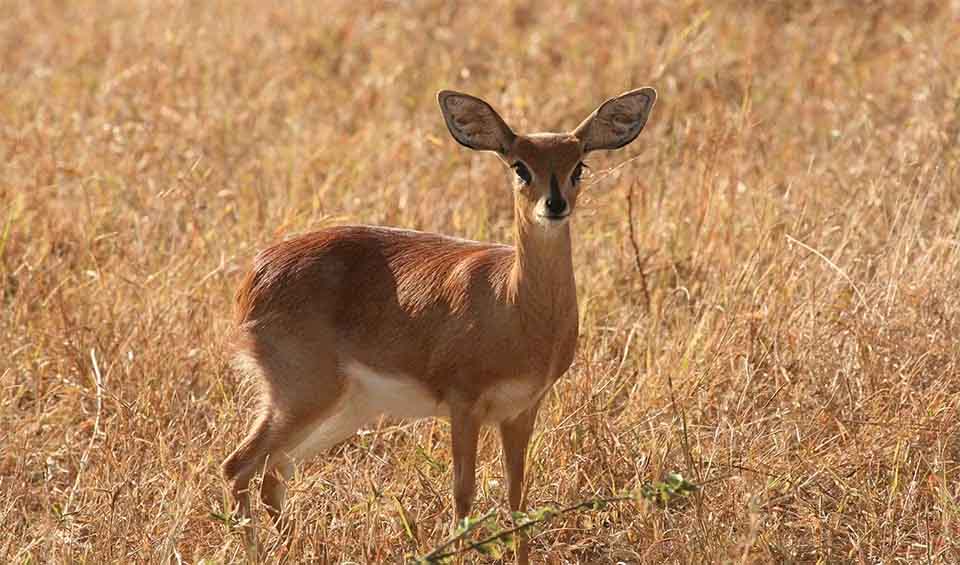Raphicerus – Small antelopes
Petite stature, distinct horns, and remarkable grace set these antelopes apart from their family
Small antelopes, often referred to as dwarf antelopes, encompass a diverse array of species scattered across the African continent’s vast and varied landscapes.
Among the distinguishing features of these small antelopes is their size. They are considerably smaller than their larger counterparts, such as kudus and elands, with some species weighing as little as 2 kilograms (4.4 lbs). This smaller stature affords them numerous advantages, including the ability to hide more effectively from predators and to navigate through dense underbrush with ease. Their agility and speed are essential survival tools in the predator-rich ecosystems they inhabit.
The physical appearance of small antelopes varies significantly across species, with coat colors ranging from light sandy hues to dark browns and greys, often complemented by striking markings that enhance their camouflage. Horns, when present, tend to be shorter and may exhibit a variety of shapes, from straight and pointed to curved and lyre-shaped. In many species, only males possess horns, which they use in intraspecific competition for mates and territory, as well as to defend against predators.
One of the most well-known small antelopes is the steenbok, which employs a unique strategy of freezing in place to avoid detection by predators, using its reddish-brown coat as camouflage against the dry savannah grass.
Despite their small size, these antelopes play a significant role in their ecosystems. They are vital herbivores, grazing on a variety of plant materials, including leaves, shoots, and fruits, which helps to maintain the health and diversity of their habitats. Moreover, they are an important food source for a variety of predators, from leopards and cheetahs to eagles and pythons.
Species in this genus
Steenbok
A tiny wonder of the animal kingdom that embodies both elegance and resilience


